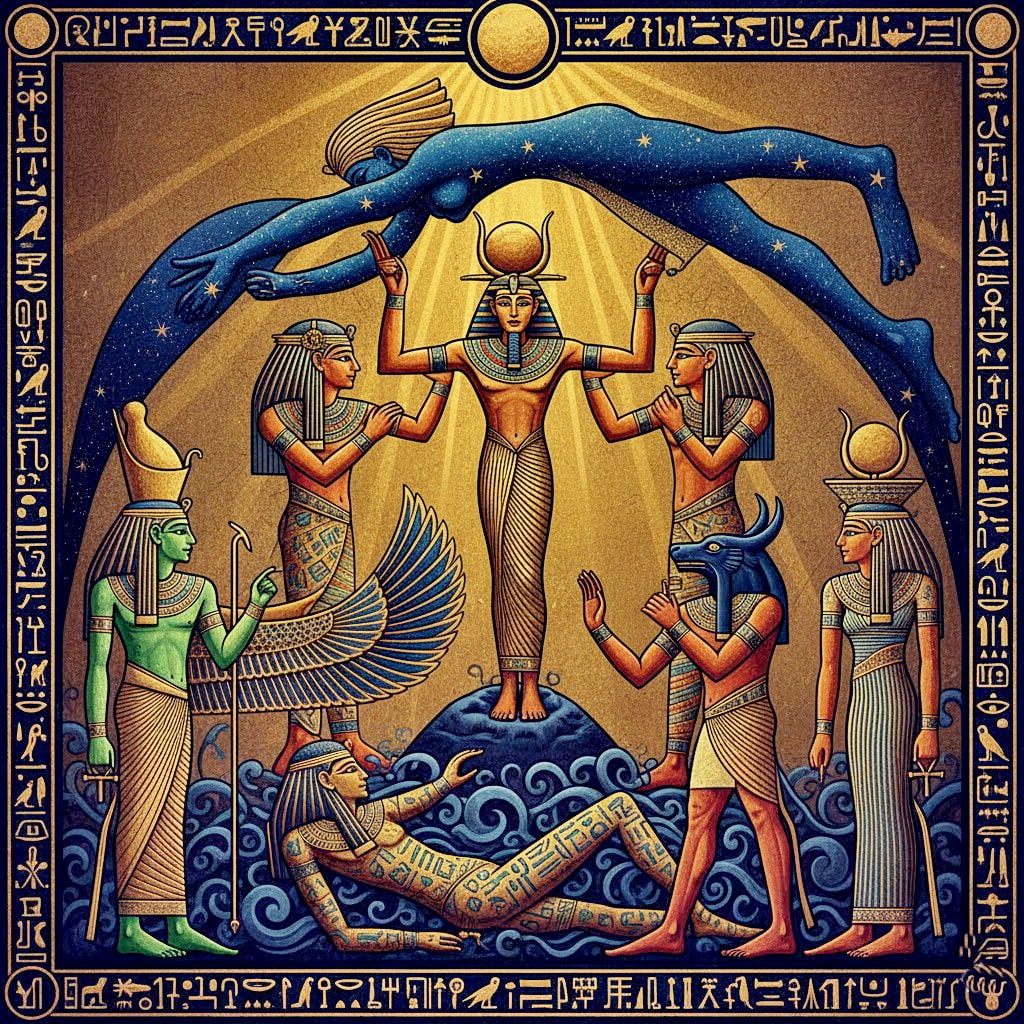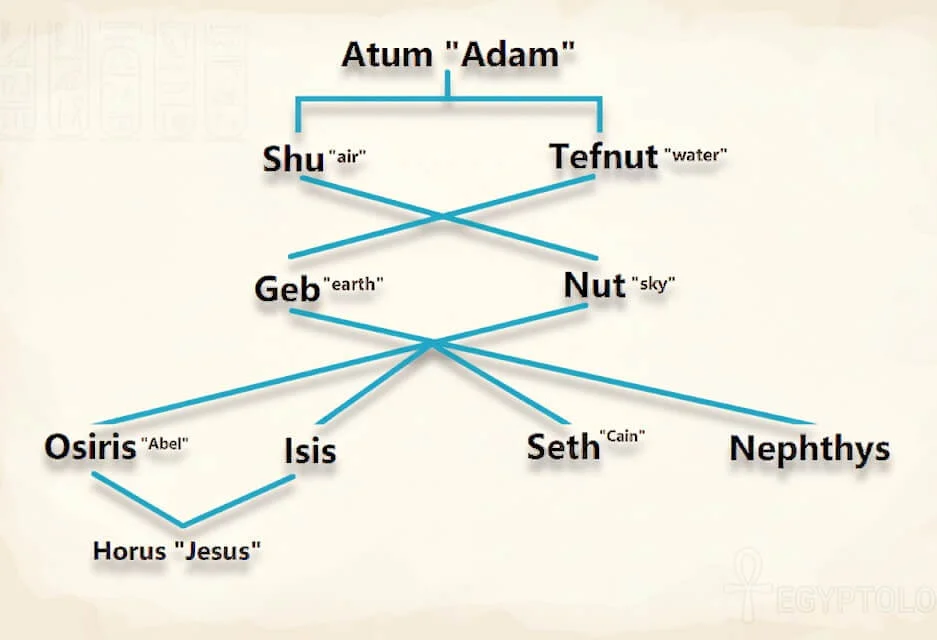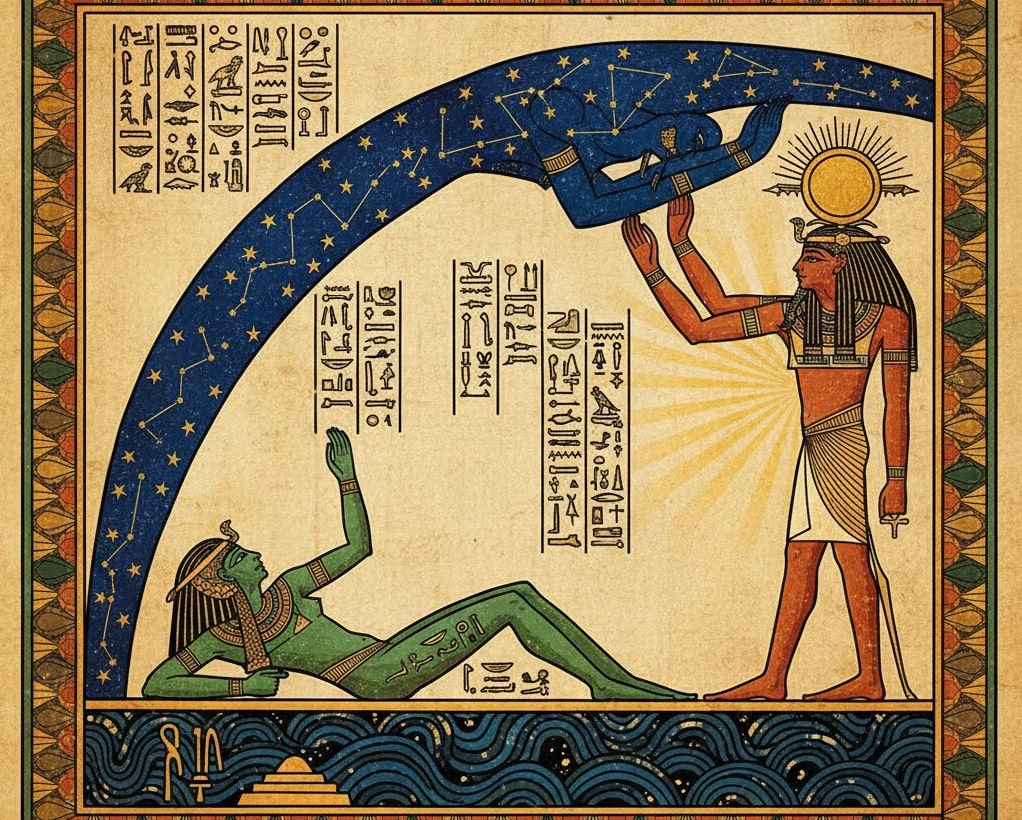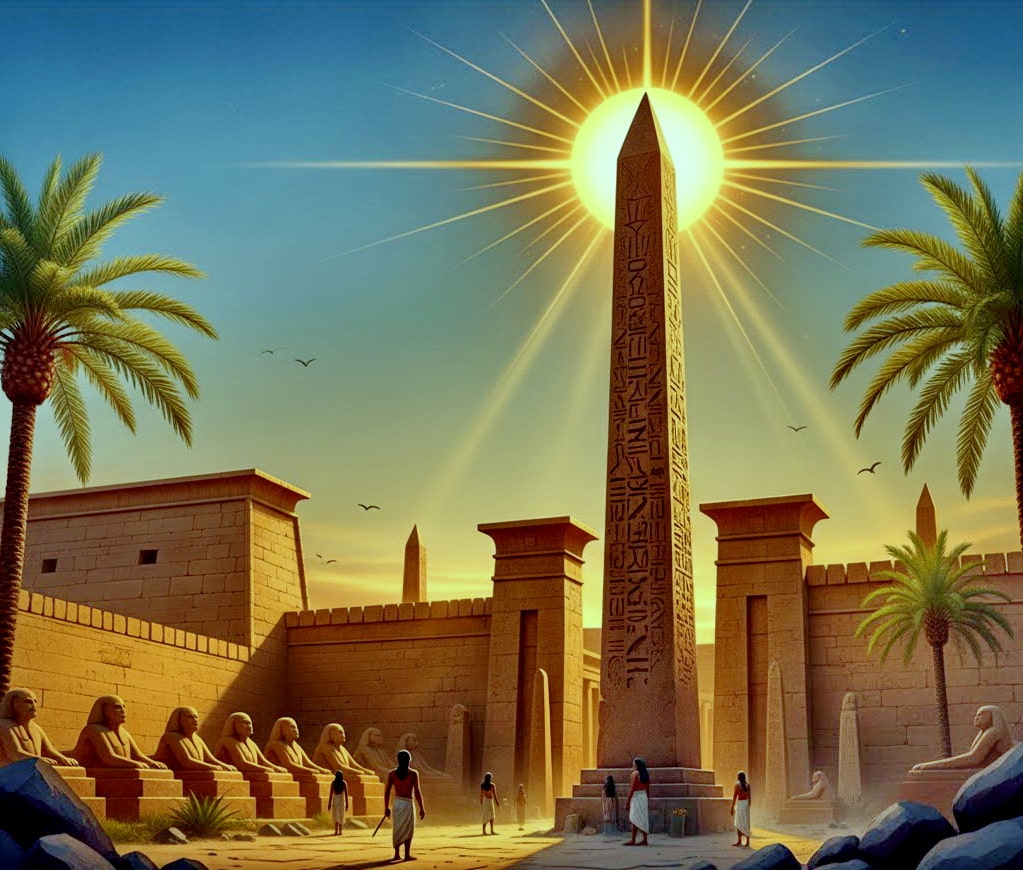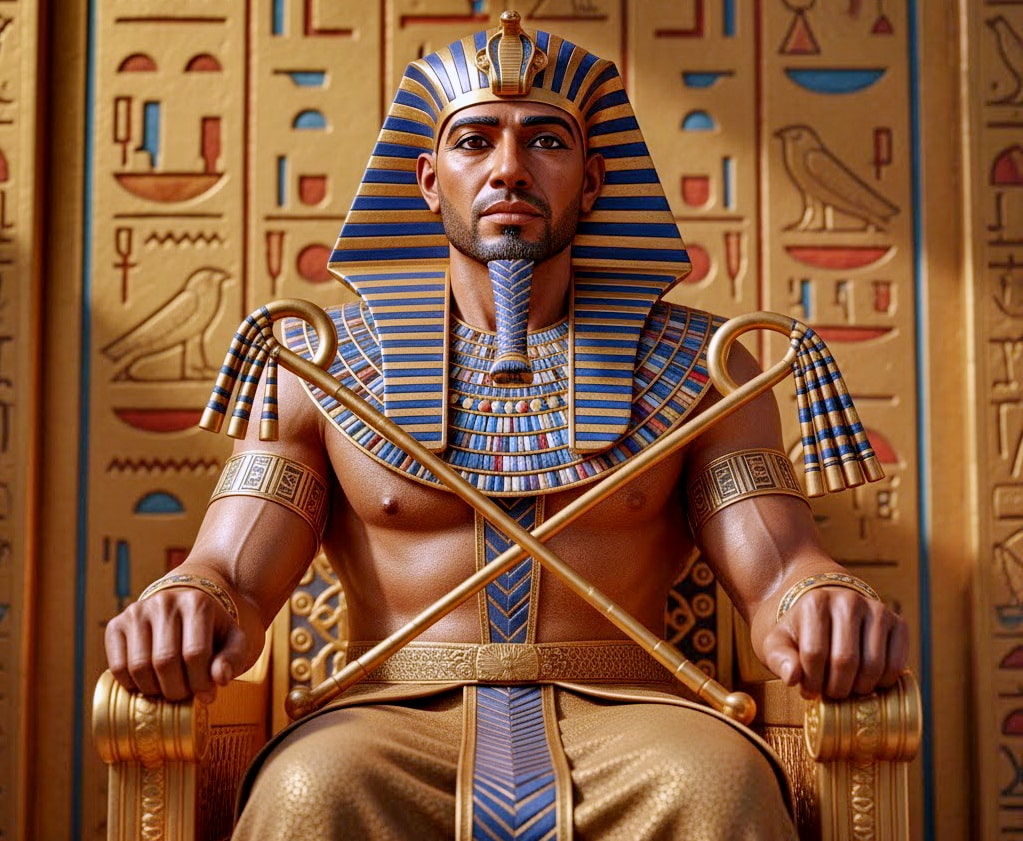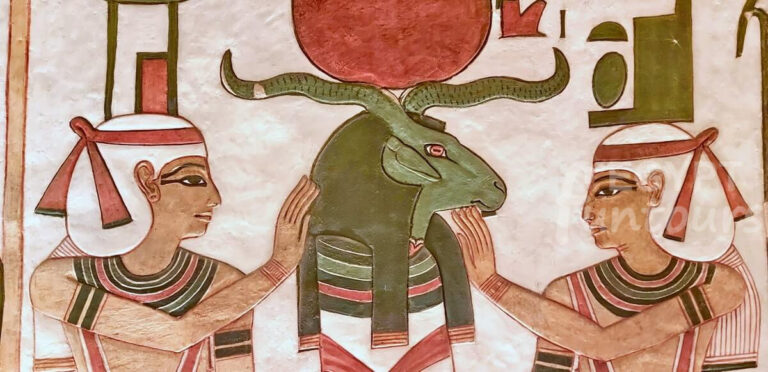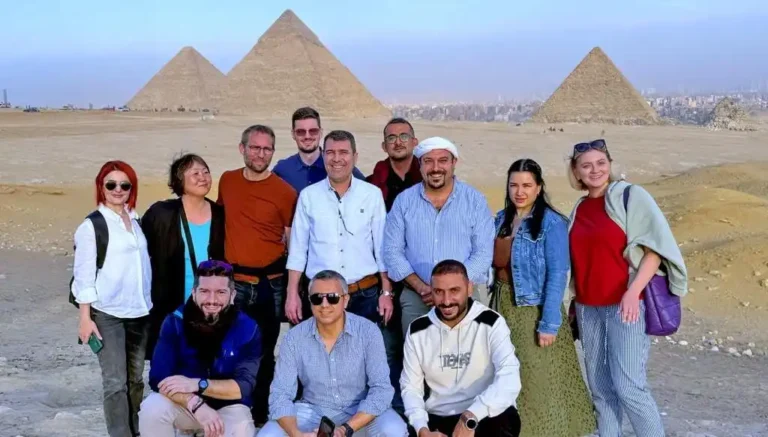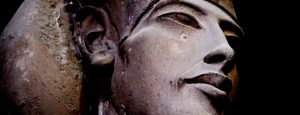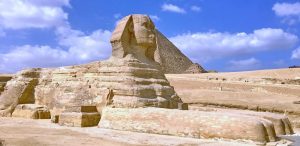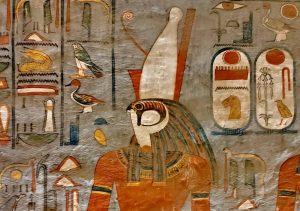Ancient Egyptian religion sought to define the cosmos. It aimed to understand life’s origin and the source of divine order. This grand idea is best shown in the Ennead of Heliopolis. This powerful group of nine deities shaped the world. They determined the fate of its people.
The main city of worship was Iunu. The Greeks called it Heliopolis, the “City of Pillars.” This city was the origin of the Ennead myth. The term Ennead comes from the Greek (enneás). This means “the nine.” It is a direct copy of the Egyptian term (Pesedjet). The Ennead is not just a list of gods. It is a structured divine family and is a full theological history of creation. It explains how Ma’at (order) began and shows the origin of divine kingship. This framework is essential to Egyptian mythology.

